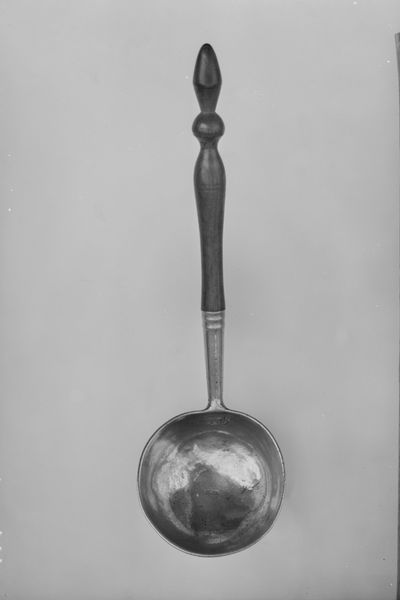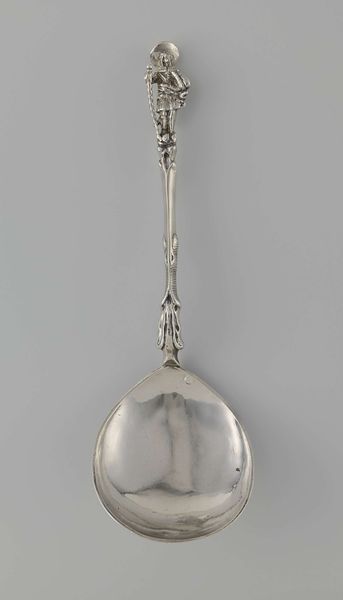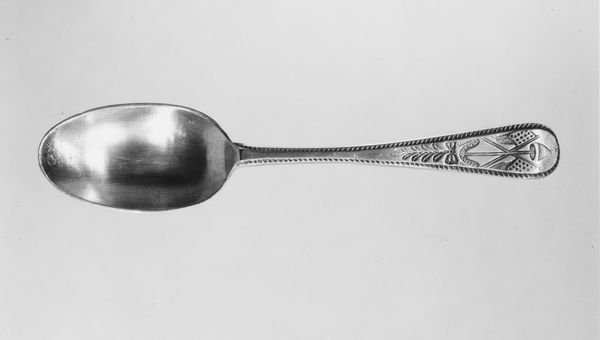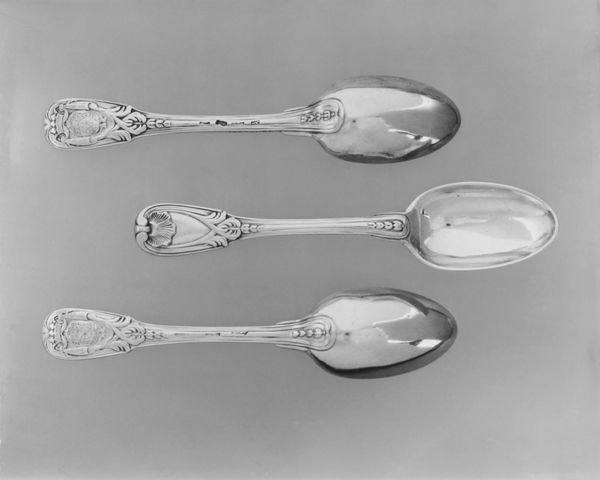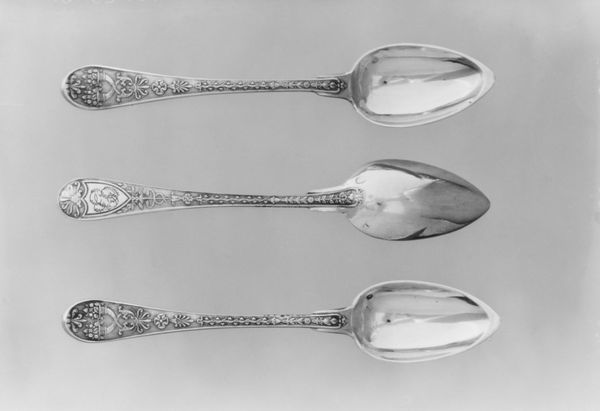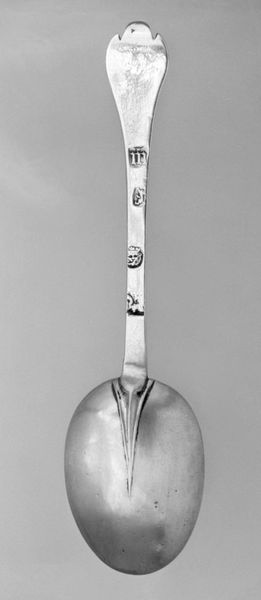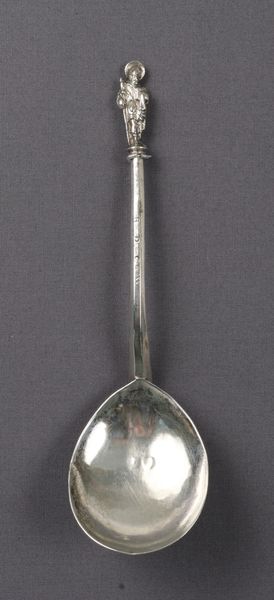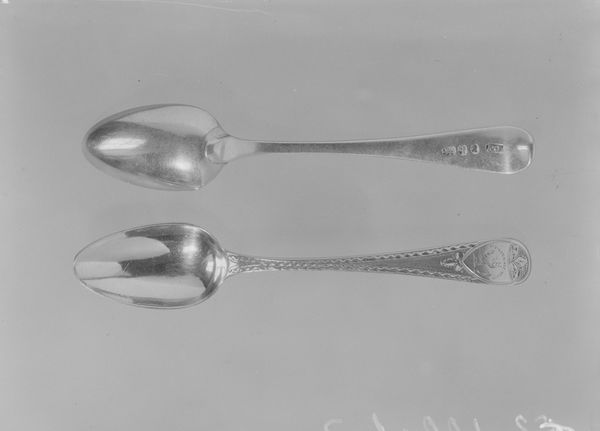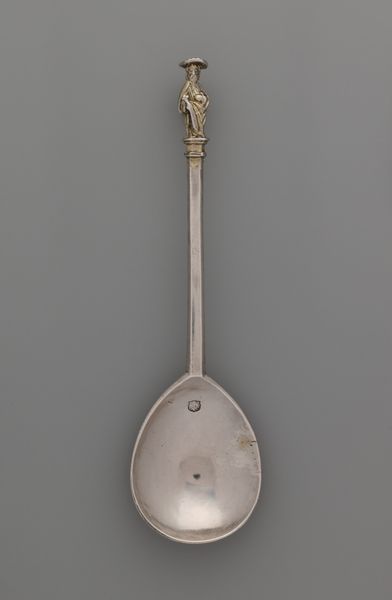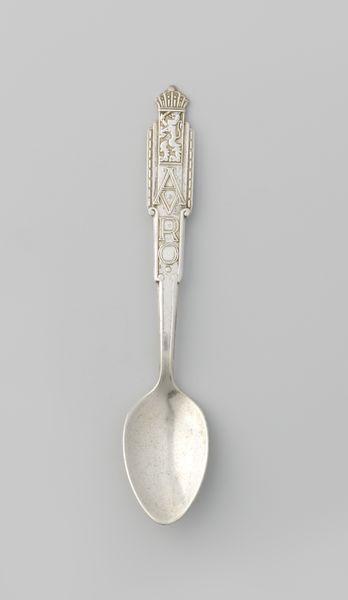
silver, metal, sculpture
#
silver
#
baroque
#
metal
#
sculpture
Dimensions: length 15.8 cm, width 4.8 cm, weight 45 gr
Copyright: Rijks Museum: Open Domain
Editor: Here we have "Spoon and Fork," a silver sculpture made around 1671 by an anonymous artist. It definitely has a somber feel to it. What do you see in this piece? Curator: The most striking element is certainly the memento mori – the skulls adorning each handle. In the Baroque period, these symbols were potent reminders of mortality, weren't they? How do you think the inclusion of death imagery transforms these everyday objects? Editor: I guess it forces you to think about something beyond just eating. It's like even during a meal, you can't escape the thought of death. Maybe it's supposed to make you appreciate what you have? Curator: Precisely. Consider the cultural context. The 17th century was marked by disease, wars, and religious upheaval. The skull wasn't just a morbid image, but a symbol deeply interwoven with daily life. And the silver, often associated with wealth and status – does that juxtaposition create a tension? Editor: Yeah, definitely. You're using these really fancy, expensive utensils, but they’re screaming about how nothing lasts forever. It seems like a paradox! Was this common? Curator: This duality was prevalent. Baroque art often grapples with contrasts: life and death, beauty and decay. This spoon and fork, although functional, transcend their purpose. They’re visual meditations. Food sustains life, yet the skull reminds us of its finitude. What do you make of this combination? Editor: I see it as a conversation about how to live. Like, acknowledging death doesn’t have to be depressing. It can be a call to value the present. Curator: An excellent point! Everyday actions become charged with meaning. What have you gleaned overall from this somewhat haunting piece? Editor: I never thought eating utensils could be so philosophical. I appreciate that it gives a snapshot of cultural memory through everyday items. Curator: Agreed. The piece challenges our assumptions about life and art. And remember, every symbol carries layers of meaning that evolve through time.
Comments
rijksmuseum about 2 years ago
⋮
This spoon and fork commemorate the death of Willem Sartoor in 1671. An inscription on the bowl of the spoon and the stem of the fork reveals that Sartoor was a sergeant with the Dutch East India Company (VOC). Both spoon and fork terminate in a tiny skull, emphasizing the sad event that occasioned their creation.
Join the conversation
Join millions of artists and users on Artera today and experience the ultimate creative platform.

